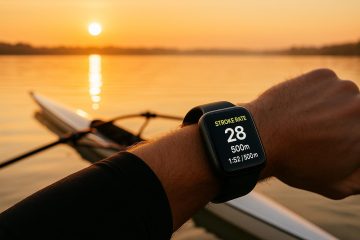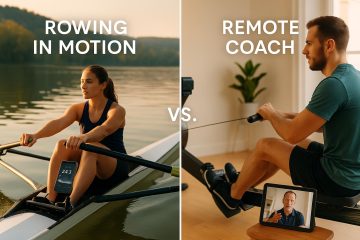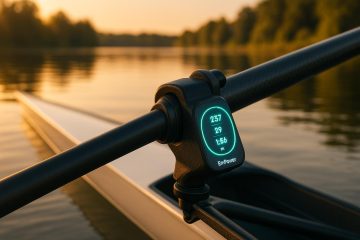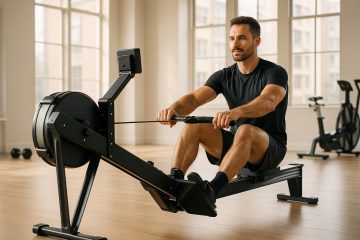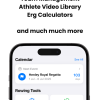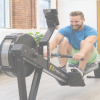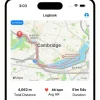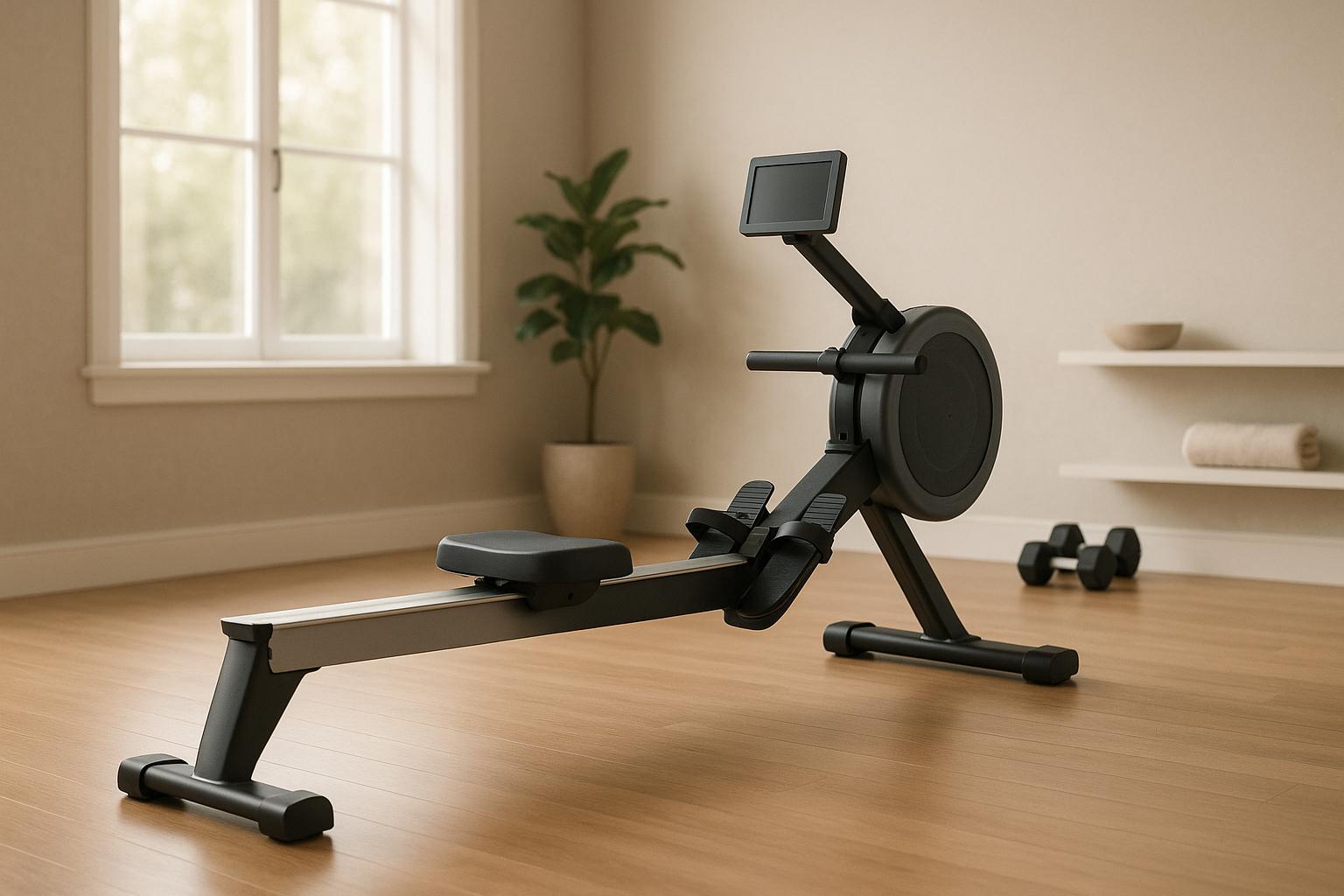
Rowing Machine Noise Levels: Top Questions Answered
When choosing a rowing machine, noise is a key factor – especially if you live in a shared space or apartment. Here’s what you need to know:
- Air rowers: Loudest option, producing a noticeable "whoosh" as you row harder.
- Water rowers: Moderate noise with a relaxing, splash-like sound.
- Magnetic rowers: Quiet, almost silent, ideal for apartments.
- Hydraulic rowers: Extremely quiet, compact, but less like traditional rowing.
To reduce noise:
- Opt for magnetic or hydraulic models.
- Use rubber mats to absorb vibrations.
- Maintain your machine with regular cleaning and lubrication.
For a peaceful workout, magnetic rowers like the ProForm Pro 750R ($699) or affordable options from Sunny Health & Fitness ($399.99) are great picks.
Quick Comparison:
| Rower Type | Noise Level | Best For |
|---|---|---|
| Air Resistance | Loud | Home gyms with soundproofing |
| Water Resistance | Moderate | Natural sound lovers |
| Magnetic/Electromagnetic | Very Quiet | Apartments, shared spaces |
| Hydraulic | Extremely Quiet | Compact spaces, noise-sensitive |
Pick the right machine and accessories to keep your workouts quiet and neighbor-friendly.
Rowing Machines: How loud are they?
Rowing Machine Types and Noise Levels
Rowing machines differ in the amount of noise they produce, depending on their resistance mechanism. Knowing these differences can help you pick the right machine for your space and workout needs. Here’s a closer look at how each type stacks up in terms of noise and practicality.
Air Resistance Rowers
Air rowers are known for being the noisiest option. They create resistance by pushing air through a flywheel, which produces a noticeable "whoosh" sound. While these machines do a great job of replicating the feel of rowing on water, the noise can be a problem in shared spaces or apartments. The harder and faster you row, the louder the sound gets.
Water Resistance Rowers
Water rowers use paddles moving through a water tank to generate resistance. This creates a sound that’s often described as a gentle splash or whoosh. Many find this natural sound relaxing, but it can still be audible in quiet environments. These rowers provide smooth, consistent resistance that closely mimics real rowing.
Magnetic and Electromagnetic Rowers
Magnetic rowers are some of the quietest options available. They use magnets to control resistance, resulting in very little friction or noise. Electromagnetic models take this a step further, offering an almost silent experience. While these machines don’t perfectly replicate the sensation of rowing on water, their quiet operation makes them a top choice for apartments or noise-sensitive areas.
Hydraulic Rowers
Hydraulic rowers are extremely quiet, thanks to their resistance system, which relies on hydraulic cylinders. This design produces minimal mechanical noise. Their compact size makes them ideal for small spaces, but the rowing motion they offer feels more like a leg press than traditional rowing.
Noise Comparison
| Rowing Machine Type | Noise Level | Sound | Best For |
|---|---|---|---|
| Air Resistance | Loud | Distinctive whooshing noise | Home gyms with soundproofing |
| Water Resistance | Moderately loud | Splash-like, natural sounds | Those who enjoy a water-like ambiance |
| Magnetic/Electromagnetic | Very quiet | Nearly silent | Apartments and noise-sensitive spaces |
| Hydraulic | Extremely quiet | Minimal mechanical noise | Compact spaces and very quiet settings |
If you’re looking for a quiet option, magnetic and hydraulic rowers are excellent choices. For a balance between authentic rowing feel and moderate noise, water rowers are a great fit. On the other hand, air rowers are best for those who prioritize performance over noise concerns.
What Affects Rowing Machine Noise
Several factors influence how much noise a rowing machine makes during use. Knowing these can help you pick the right model for quieter environments.
Resistance Mechanism
The type of resistance system in a rowing machine has the biggest impact on noise levels. As Hydrow.com points out:
"If noise level is important to you, the sound coming from your rowing machine will largely depend on the type of rower you invest in, with electromagnetic, magnetic, and hydraulic rowing machines making less noise than air or water rowers."
- Air rowers are the loudest. Their fan blades push air to create resistance, producing a noticeable whooshing sound that gets louder as you row faster.
- Magnetic rowers are much quieter. They use magnets to generate resistance without direct contact between moving parts.
- Water rowers create a natural splashing sound as water moves in the tank, which some users find soothing.
- Hydraulic rowers are typically the quietest, as their resistance comes from fluid moving through cylinders, resulting in minimal noise.
Build Quality and Materials
The materials and construction of a rowing machine also play a big role in how much noise it makes. Machines with solid frames and high-quality parts reduce vibrations and rattling, which can amplify sound.
- Metal frames provide better stability and absorb vibrations, lowering the amount of noise transmitted through floors or walls.
- Plastic components, on the other hand, may loosen over time, leading to more vibrations and noise.
Choosing a well-built machine can make a noticeable difference in sound levels, especially for long-term use.
Maintenance and Usage
Keeping your rowing machine in good condition is essential for reducing noise. Regular maintenance ensures smooth operation and minimizes unnecessary sounds.
- Lubricate moving parts like the chain and seat rollers as recommended by the manufacturer to reduce friction.
- Tighten loose components, such as screws and bolts, to prevent rattling.
- Clean the machine after each session to remove sweat and dust, which can lead to increased friction over time.
How you row also matters. Smooth, controlled movements are not only better for your workout but also help keep noise to a minimum. Jerky or aggressive motions can produce unnecessary sound and wear down the machine faster.
How to Reduce Rowing Machine Noise
If your rowing machine is making more noise than you’d like – or you want to prevent it from becoming a problem – there are a few practical ways to keep things quieter. These include picking the right type of machine, using accessories that dampen sound, and taking steps to maintain and position your equipment effectively.
Choose Quieter Rowing Models
Not all rowing machines are created equal when it comes to noise. If you’re looking for a quieter option, magnetic, electromagnetic, or hydraulic rowers are your best bet. For example, hydraulic rowers operate at just 48 decibels, while magnetic brake models come in at around 51 decibels. On the other hand, air resistance rowers can hit 73 decibels – similar to the sound of a strong fan. Water rowers, often praised for their natural "whooshing" sound, produce about 67.5 decibels. While some find this sound relaxing, it might still be too loud for certain settings, like shared living spaces.
Use Noise-Absorbing Accessories
Adding the right accessories can make a world of difference. High-density rubber mats are particularly effective at absorbing vibrations and reducing noise that might otherwise travel through your floors. The thickness of the mat plays a big role in how much noise it blocks:
- A 2-inch Sterling Athletic Rubber Tile can cut noise by up to 38 decibels.
- A 1.25-inch version reduces it by 28 decibels.
- Thinner options, like the 7/8-inch PaviGym Extreme SS Gym Rubber Tile, provide about a 21-decibel reduction.
"Gym rubber mats, placed between the treadmill and the floor, use the natural shock-absorbing characteristic of rubber to minimize vibration and sounds produced from the machine." – MENSQUATS
Foam mats are another option, though they might not hold up as well over time compared to rubber. If you’re aiming for a more polished look in your home gym, consider tiles with an artificial turf surface over a thick rubber base. These not only look great but also help with sound dampening.
Maintenance and Placement Tips
Keeping your rowing machine in top condition and strategically placing it in your space can also help reduce noise. Regular maintenance – like checking for loose parts or lubricating moving components – ensures smoother, quieter operation. When setting up your machine, try positioning it in the center of the room or against an exterior wall to minimize noise transfer to shared spaces.
For extra soundproofing, you can add acoustic panels, soundproof curtains, or foam tiles to the room. These absorb sound waves before they can travel further. Finally, focus on maintaining smooth, controlled strokes during your workouts. Not only does this reduce noise, but it also prevents unnecessary wear and tear on your machine.
Best Rowing Machines for Quiet Spaces
Living in an apartment or sharing a space with others can make finding the right rowing machine a top priority. The goal? A peaceful workout that won’t disturb your neighbors or roommates. Luckily, some rowing machines are specifically designed to operate quietly, making them perfect for noise-sensitive environments.
Magnetic Rowers
Magnetic rowers are a standout choice for quiet workouts, thanks to their nearly silent operation. For example, the ProForm Pro 750R Rower, priced at $699, is a reliable option. If you’re looking for something more budget-friendly, Sunny Health & Fitness offers two great models: one priced at $399.99, praised for being "very smooth & quiet", and another with a 4.6/5 rating at $400. Both deliver consistent, noise-free performance. Plus, many magnetic rowers come with vertical storage features, so you can easily reclaim your floor space once your workout is done.
While magnetic rowers are a top choice, there are other designs worth considering for quieter exercise sessions.
Hydraulic Rowers
Hydraulic rowers are another quiet option, using hydraulic cylinders to minimize noise. Their compact design makes them an excellent fit for smaller spaces. However, they may not be the best choice for taller users due to their limited range of motion.
Water Rowers
For those who enjoy the natural feel of water rowing but need a quieter setup, some water rowers are designed to reduce noise. Models with sealed tanks, for instance, help minimize splashing sounds while maintaining an authentic rowing experience. The Hydrow Rower and Hydrow Wave take this a step further by incorporating electromagnetic systems, creating a realistic yet quiet rowing experience – ideal for shared spaces.
With these options in mind, there’s no shortage of quiet rowing machines to fit your needs. Whether you’re drawn to magnetic, hydraulic, or water rowers, RowingList.com can guide you to the perfect match for your space.
Using RowingList.com to Find Quiet Rowing Machines
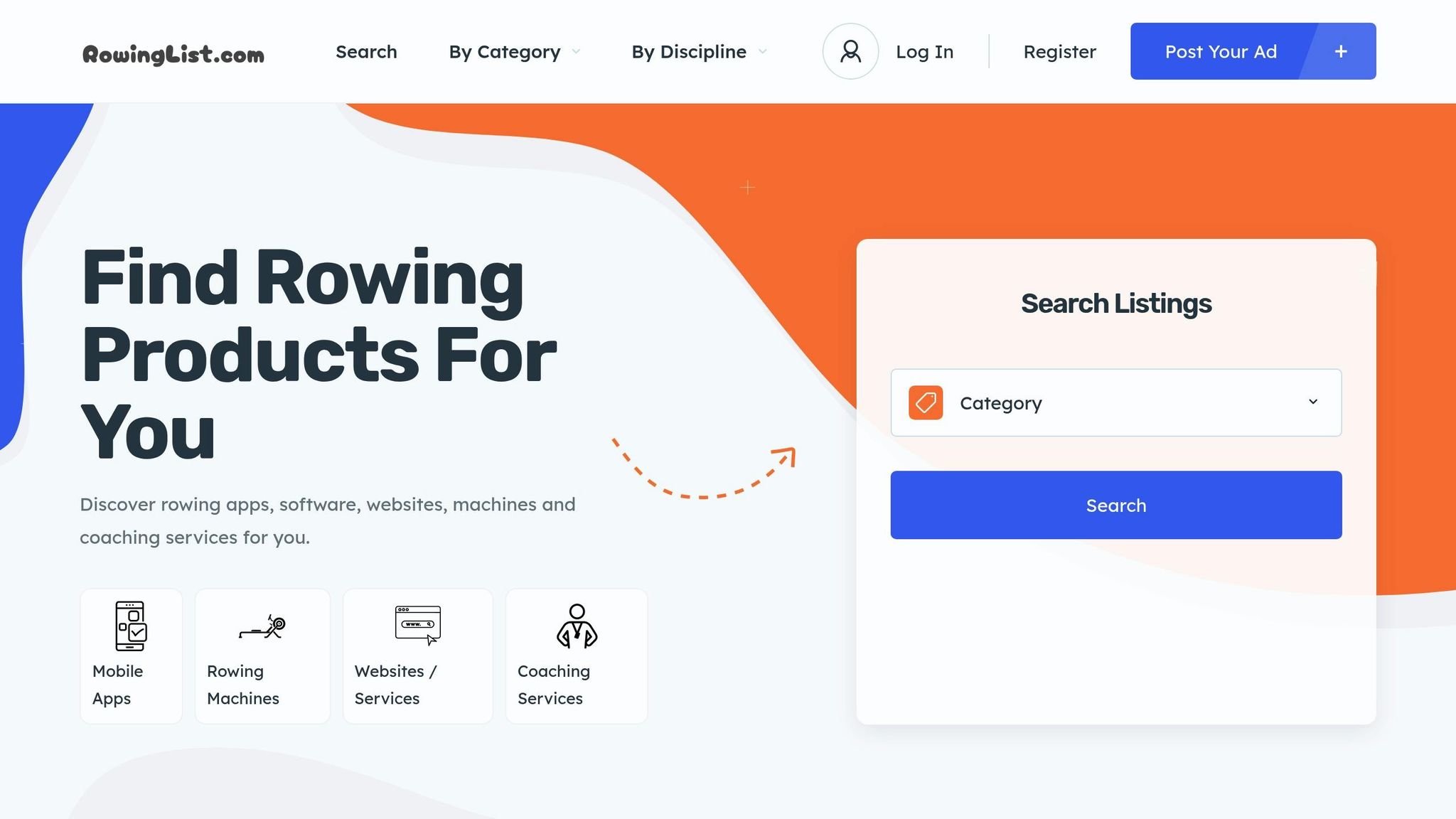
Building on our earlier discussion about noise levels in rowing machines, RowingList.com offers a practical way to identify and compare quieter options. This platform provides a detailed directory and filtering tools, allowing you to focus on machines that match your noise preferences. With its user-friendly interface, you can quickly narrow down your choices based on noise levels and other important features.
Filter by Type and Noise Level
RowingList.com makes it easy to filter machines by resistance type, helping you zero in on quieter models. Magnetic rowers, for example, are known for their whisper-quiet operation, making them a popular choice for those prioritizing minimal noise. Similarly, hydraulic rowers tend to run quietly, making them another option for noise-sensitive spaces. These filters simplify the process, steering you away from louder options like air resistance rowers, which are typically noisier.
By applying these filters, you can quickly identify machines that meet your needs, especially if you’re looking for a rower suitable for apartments or shared living spaces.
Compare Features and Reviews
Once you’ve filtered your options, RowingList.com lets you dive deeper by comparing specifications and reading user reviews. These tools help you evaluate key factors like resistance mechanisms, maintenance requirements, and overall build quality – all of which can impact noise levels. User reviews often provide valuable insights, especially when they mention noise performance or suitability for quiet environments.
For example, some users of water rowers highlight the sound of water as a calming element of their workout, while others focus on the machine’s construction and materials for quieter operation. Paying attention to these details can guide you toward a model that aligns with your preferences.
Browse Featured Listings for Quiet Models
The platform’s featured listings spotlight rowing machines specifically designed for quiet operation. These curated picks include detailed specs, verified reviews, and pricing information, making it easier to find a machine that fits both your budget and noise requirements.
Whether you’re searching for an affordable option or a premium model that combines top-tier performance with low noise, the featured listings offer a great starting point. They streamline your search, saving you time while ensuring you get the best rowing experience with minimal disruption to your surroundings.
Conclusion
When choosing a rowing machine, understanding noise levels can make all the difference – especially if you live in close quarters or share your space. Here’s the breakdown: magnetic and hydraulic rowers are the quietest options, water rowers strike a balance with gentle water sounds, and air resistance rowers are typically the loudest. Knowing this can help you pick a machine that fits comfortably into a noise-sensitive environment.
Beyond the resistance type, factors like build quality, regular upkeep, and strategic placement play a big role in minimizing noise. Paying attention to these aspects can not only reduce sound but also keep your machine running smoothly for years to come.
If you’re looking for a quiet rower, RowingList.com simplifies the process by letting you compare models based on resistance types and other key features. With tools like side-by-side comparisons and user reviews, you’ll get a clearer picture of how machines perform in real-life settings. This way, you can confidently find a rowing machine that suits your space and workout needs.
FAQs
What are some tips to make my rowing machine quieter for apartment living?
To reduce the noise of your rowing machine in an apartment, start by placing a thick rubber or foam mat beneath it. This can help absorb vibrations and prevent sound from traveling through the floor. Adding soft furnishings like rugs, carpets, or heavy curtains in the room can further dampen sound and reduce echoes.
If your machine is particularly noisy, try rowing during the day when neighbors are less likely to be disturbed. Additionally, regular maintenance – like tightening any loose parts – can keep the machine running more smoothly and quietly. These adjustments can make your workouts more enjoyable while keeping the peace in shared living spaces.
How can I maintain my rowing machine to keep it running quietly?
To keep your rowing machine running smoothly and quietly, a little routine maintenance goes a long way. Start by lubricating the moving parts, such as the chain or flywheel, with the lubricant recommended by the manufacturer. This not only reduces friction and noise but also keeps the machine performing at its best.
It’s also important to check and tighten any loose bolts or screws from time to time. Loose fittings can lead to rattling noises that disrupt your workout. Don’t forget to clean the machine regularly, especially areas like the rail and seat track, as dust and debris can contribute to unwanted sounds.
By sticking to these simple upkeep practices, you can keep your rowing machine quiet and in great shape, making it ideal for shared spaces or apartments where noise levels matter.
What are the best magnetic rowing machines for quiet environments like apartments or shared spaces?
If you’re in the market for a quiet and efficient rowing machine, two standout options are the NordicTrack RW700 and the Hydrow Pro. Both utilize advanced magnetic resistance systems, delivering a smooth and whisper-quiet rowing experience – perfect for those who need to keep noise to a minimum.
Magnetic rowing machines are generally much quieter than their air or water counterparts, making them a great fit for apartments or shared living spaces. When choosing the right model, take into account factors like resistance levels, overall build quality, and dimensions to ensure it aligns with your workout goals and available space. These machines not only help you maintain a peaceful environment but also provide a powerful full-body workout.

